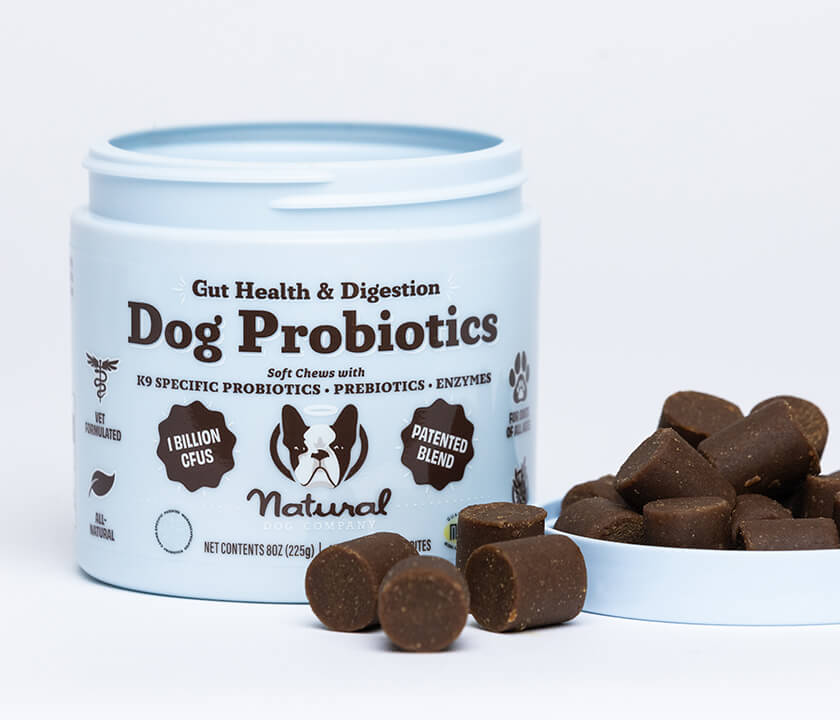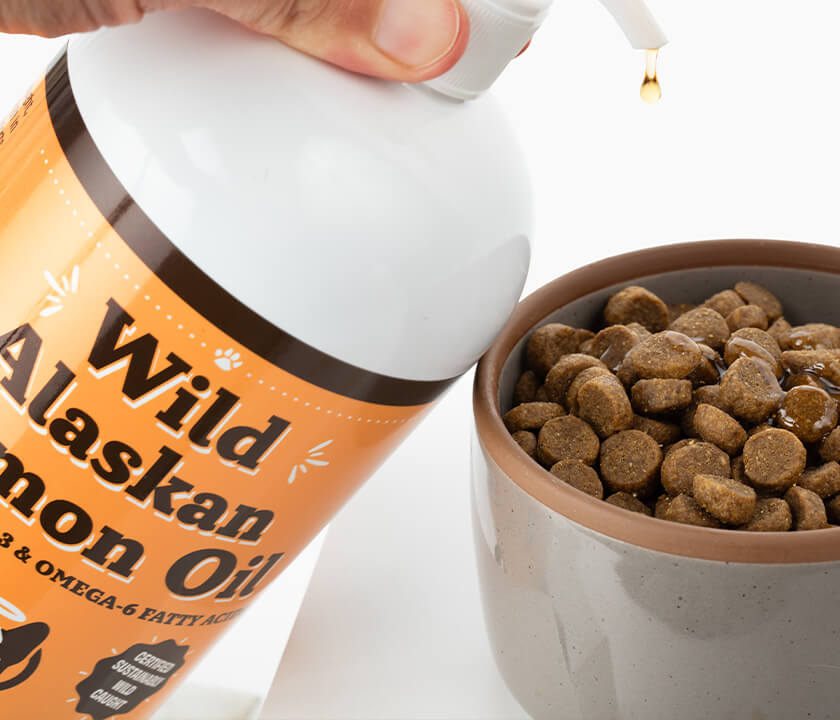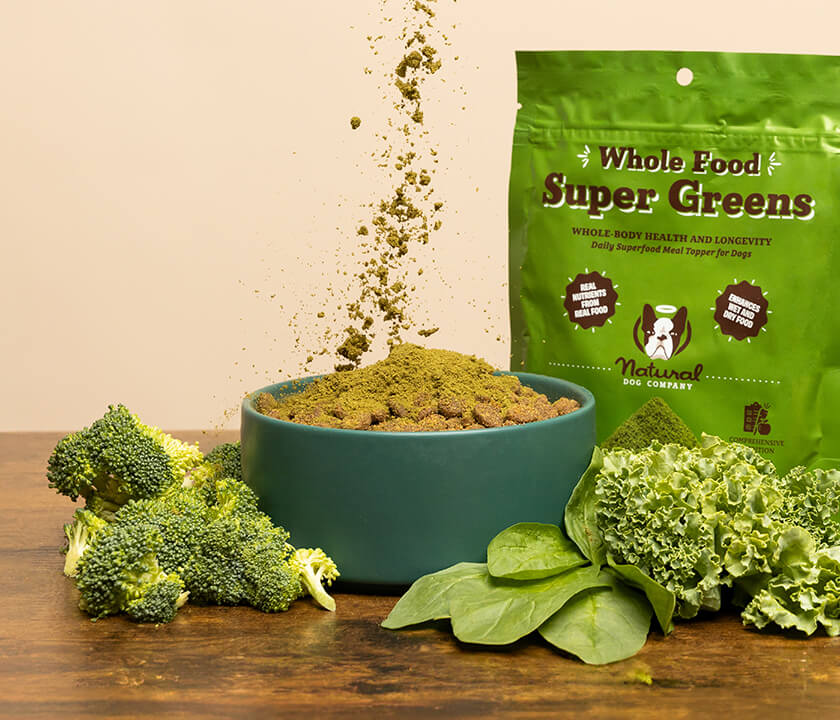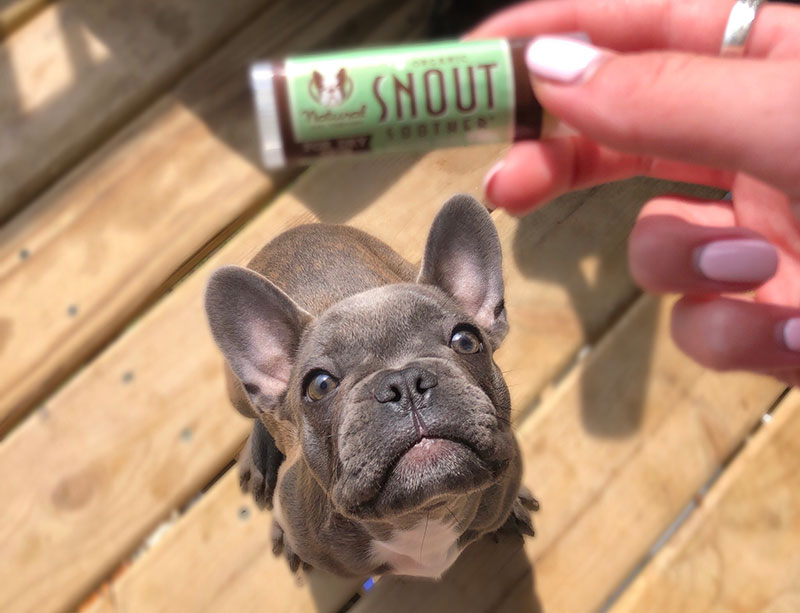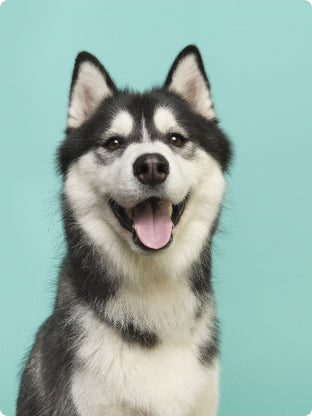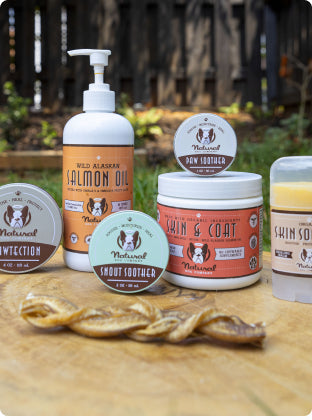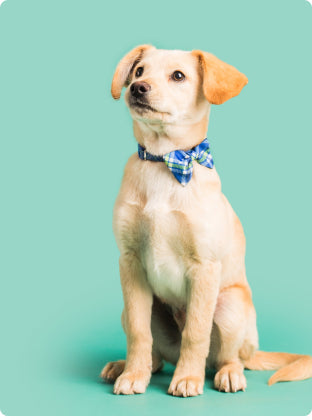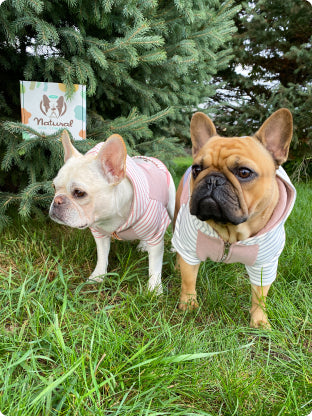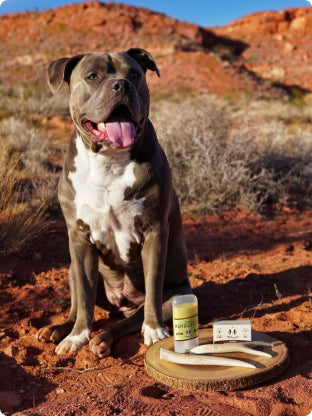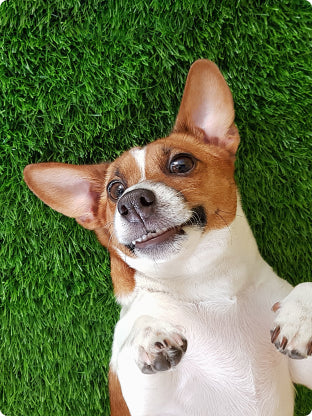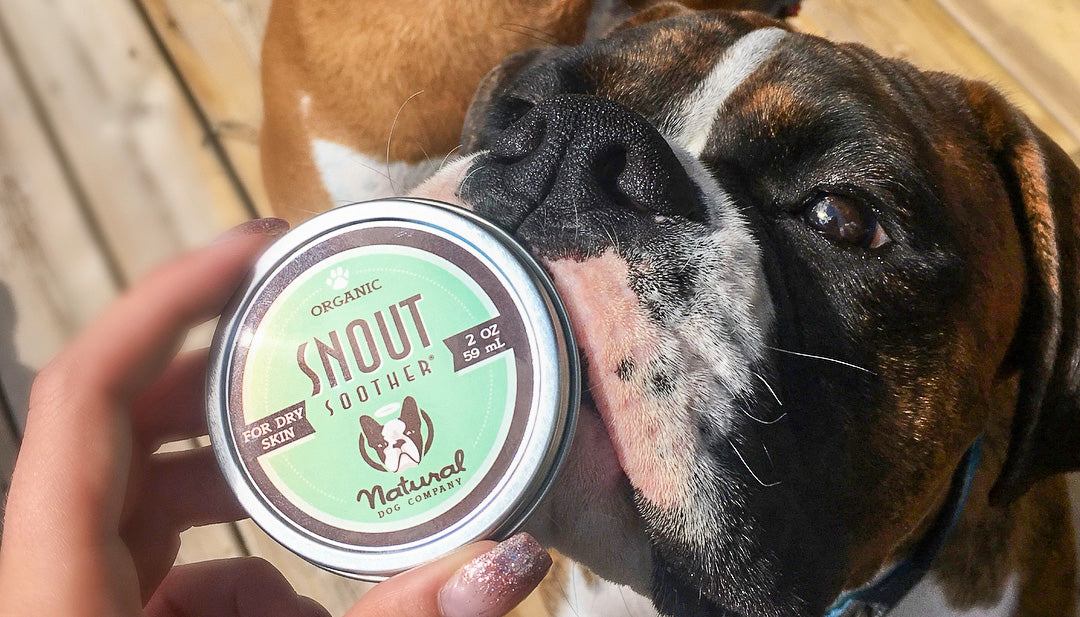You’ve probably heard the old adage that a warm, dry nose is a sign of a sick dog. While that old wive’s tale is not entirely accurate, a consistently or excessively dry dog nose is something you should address. The temperature and moistness of a dog’s nose can vary throughout a given day, but in general, a dog’s nose should be damp most of the time.
Dogs can smell up to 10,000 times better than humans, and their cold, wet nose is vital to their survival. Scent is your dog’s primary sense—in fact, the olfactory region of their brain is 40 times larger than a human’s! Dogs are constantly experiencing the world around them by processing the smells in their environment.
Why is a dog’s nose wet?
A healthy dog nose is moist and shiny.
A healthy dog’s nose is wet because of a thin layer of mucus secreted by their nasal lining; scent particles are more easily trapped on this damp surface than a dry one. Frequent nose-licking helps to keep their snout moist and pulls those trapped scent particles into the dog’s mouth, where olfactory glands receive the smelly intel. Working dogs use their wet noses to detect bombs, drugs, missing people, even bed bugs, but even house pets rely on a healthy nose for optimal sniffing performance.
So Why is My Dog’s Nose Dry?
A dog’s nose may become dry at various times throughout the day or year for many reasons, but a dry nose doesn’t necessarily mean the dog is sick. However, if your pup’s nose appears rough, flaky, or cracked, their sense of smell will be affected. A crusty nose is also quite uncomfortable and should be remedied as soon as possible! To relieve a dry dog nose, it’s important to first diagnose what is causing the dryness, as this can sometimes indicate underlying health problems.
Common causes of a dry dog nose:

Dogs who nap in front of fireplaces or heaters may experience dry nose.
Exposure to the elements or dry air
Just like your skin, your dog’s nose can get sunburn when they’re spending a lot of time in the sun. Similarly, while you’re stocking up on lotions to relieve your dry winter skin, your dog’s skin can be much drier in the cold winter months. If they spend a lot of time lounging in front of a cozy source of warmth like a space heater or fireplace, their nose can dry out.
Allergies
Dogs can develop allergies to all sorts of things, sometimes even later in life. Since dogs experience their world nose-first, if they have an environmental allergy to something in their living space, chances are they’ll show a reaction on their nose. Allergic reactions include other symptoms like persistent sneezing, itching, hives, watery fluid from the nose, and ear infections.
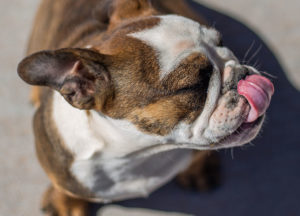
Flat-faced breeds like pugs and bulldogs cannot reach their nose with their tongue to moisten it.
Breed trait
Brachycephalic (flat-faced) breeds like Pugs and Bulldogs have difficulty licking their noses because their snouts are so short. Other breeds, such as Poodles and Lhasa Apsos, are prone to blocked tear ducts, which can also dry the nose out.
Just woke up
Dogs don’t lick their noses while they’re asleep. Without any other symptoms, a dry nose after waking up from a cat nap (yep, we said it) is usually nothing to worry about.
Dehydration
Often the result of strenuous exercise or hot temperatures, dehydration can cause a dog’s nose to dry out. Whenever you observe a dry nose, also check the gums—and get in the habit of monitoring your dog’s gums, especially if they lead an active lifestyle. Properly hydrated gums are pink and moist to the touch, while gums that are dry, tacky, and pale indicate dehydration. Keep fresh water available at all times, and remember: dogs should drink approximately one ounce of water per pound every day!
4 Steps to Soothe a Dry Dog Nose:
If your dog has developed a dry, cracked nose, start with these four steps to soothe your pup’s snout!
Step 1: Keep track of when your dog’s nose is dry or wet
The first thing you should do is start taking detailed notes whenever you notice your dog’s snout looks or feels a bit parched. Is their nose drier during certain times of the day or year? How often does it happen? How long does the dryness last? As you track nose condition, consider the common causes listed above to help you pinpoint the reason.
Step 2: Remove potential allergens
Allergies can be tricky to diagnose since there are so many things that can trigger an allergic reaction and many different symptoms which can indicate allergies. However, you can start with some common allergens that may come into contact with your dog’s nose.
Plastic allergies are common in dogs, so if you’re using plastic food or water bowls, try swapping them for stainless steel bowls. If you’ve recently added a new type of toy to your dog’s collection, consider removing it to see if the dry nose clears up. Same with new household products like floor cleaners, carpet deodorizers, and laundry detergents, which can cause reactions in sensitive dogs. Anything that your dog might bump with their nose and which you’ve changed recently should be temporarily removed from their environment to pinpoint the source of new allergies.
Step 3: Soothe your dog’s nose with a balm

Snout Soother treats dry dog noses of all shapes and sizes! @coop_poppy_rosi
Whether your dog needs temporary relief or a regular nose care regimen, an all-natural balm like Snout Soother can help keep your dog’s nose moist and healthy. Bonus: Snout Soother acts as a natural sunscreen and moisturizer formulated specifically for canine noses. Sensitive dogs are more prone to skin issues, so we carefully source each ingredient to ensure that our vegan, all-natural dog products are 100% safe for all pups.
The best part? This balm really works: read hundreds of real customer testimonials and see for yourself!
Step 4: Watch out for other symptoms
Most dry dog noses can be solved by eliminating allergens and using an effective dog nose balm like Snout Soother. If you don’t see any improvement after trying the steps above, consult with your veterinarian to explore allergy testing and get a checkup.
Take note of other symptoms like fever, dry eye, lethargy, vomiting or diarrhea, or changes in appetite. In combination with a prolonged dry nose, symptoms like those could be a sign of more serious conditions requiring medical attention, including autoimmune conditions like discoid lupus erythematosus, pemphigus, or nasal hyperkeratosis.
Are There Other Solutions for a Dry Dog Nose?
As with any canine condition, there are a plethora of options for treatment, but not all are advisable or effective. Some are not even safe for your dog!
Can I put Neosporin on my dog’s nose?
The short answer is no. You should avoid putting Neosporin anywhere your dog can easily reach with its tongue, as it isn’t safe for ingestion. Dr. Danel Grimmett, a veterinarian with Sunset Veterinary Clinic in Oklahoma, told the AKC that while “small amounts of Neosporin are not harmful,” the main concern is the potential to impact healthy gut bacteria. Grimmett also explained that “a second potential cause of GI upset would be the lubricant base,” which could also cause vomiting or diarrhea. So stick with a dog-specific balm and save the Neosporin for your own scrapes.
Can Vaseline heal my dog’s nose?
Vaseline is another human-only remedy for chapped skin which should never be used on our pets—and maybe not on humans, either! Petroleum jelly is a synthetic product that can clog pores, exacerbating skin issues, and which won’t do much to moisturize an already-dry nose. Additionally, petroleum jelly causes lipoid pneumonia in dogs if too much is inhaled, which can happen if applied to a chronically dry dog nose!
Is baby oil safe for dogs?
Baby oil is safe to use on fur, but it should be applied conservatively. Because it often contains chemicals and fragrances that aren’t digestible, you should keep it away from the mouth or areas of frequent licking. As always, consult your vet about home remedies ahead of time.
Will coconut oil help my dog’s dry nose?
The benefits of coconut oil can be just as helpful for dogs as they are for humans. Organic coconut oil (a key ingredient in many of our products) offers powerful moisturizing qualities for your dog’s dry nose, skin, and hair. The biggest drawback of using coconut oil on your dog’s nose is the mess, which is why we’ve formulated our balms for quick absorption and minimal melting.
Snout Soother is the best solution for your dog’s dry nose!
There are many reasons for a dog’s dry nose, but most are easily treatable with nose balm and good habits. However, prolonged dryness, along with other symptoms, can indicate a more serious health issue, so pay attention to that sniffer. If you’re looking for a safe and effective all-natural solution to your dog’s dry nose, give our Snout Soother a try—these results speak for themselves!

before and after pictures are results after only 24 hours of using the Snout Soother. I couldn’t be happier, I really think he’s a happier dog because of the relief he has from Snout Soother! — Emily; Boston, MA

When we started to notice our dog’s nose was dry, crusty and parts of it were peeling off – we knew we had to do something. We tried every trick in the book. Nothing helped.
After the first application of SnoutSoother, I could see it looked less crusty immediately. After a week of daily applications, I could see a huge improvement. After a few weeks, her nose wasn’t even crusty anymore. We have been using the Snout Soother religiously for about a year now and haven’t looked back. No more crust, no more peeling, no more dryness.— Lee-Ann; Vancouver, BC
